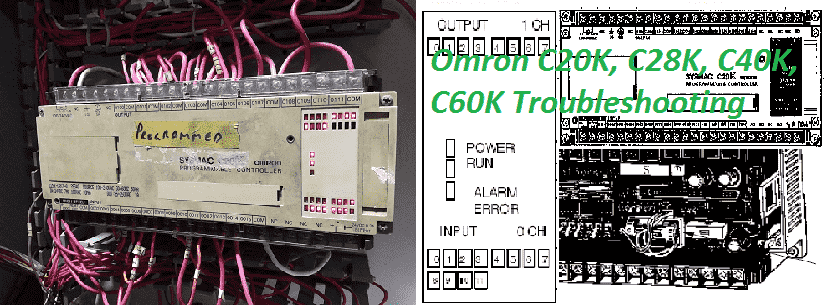The Omron C20K, C28K, C40K, and C60K shoebox programmable logic controllers have been discontinued since March of 2002. These Omron ‘K’ series PLCs were popular controllers and have been in installations for over 25 years. We will take a look at this Omron PLC and review some troubleshooting techniques. Planning for the eventual fatal failure of the CPU will also be discussed.
Find parts for your Omron K series PLC.
Manuals – Omron Troubleshooting
The following are the manuals for the ‘K’ series PLCs. You will note that the C20 manual is also listed. This is because the ‘K’ series could use the C20 expansion modules. The C20 was also referred to as a ‘Flatpack’ PLC.
Operation Manual – Sysmac C20K/C28K/C40K/C60K Programmable Controllers
https://www.lakewoodautomation.com/support/manuals/Omron/W146E15%20CxxK%20series%20operation%20manual.pdf
This manual will go through the instruction set as well as how to program the unit using the handheld unit. (3G2C7-PRO15-E)
Installation Guide – Sysmac C20K/C28K/C40K/C60K Programmable Controllers
https://www.lakewoodautomation.com/support/manuals/Omron/W147E31%20Cxxk%20Installation%20Manual.pdf
This manual will review the installation and troubleshooting techniques on this programmable controller.
C20 Programmable Controller – Sysmac C-Series – User’s Manual
http://www.edata.omron.com.au/eData/PLCs/Micros/W083-E1-5.pdf
This manual includes the installation, instruction set, and troubleshooting of the C20 PLC.
Hardware – Omron Troubleshooting
The K series PLC has very rugged hardware. Power supplies on this unit are rated for twenty-five years before failure. This is why we are discussing the unit and plans for upgrades.
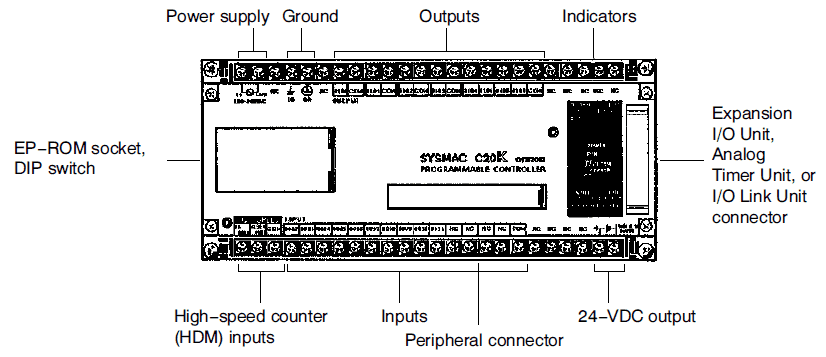
The above picture will show the components on the CPU base of each of the controllers. It’s important to pay attention to the indicators on the front of the unit. This will tell us the condition of the PLC.
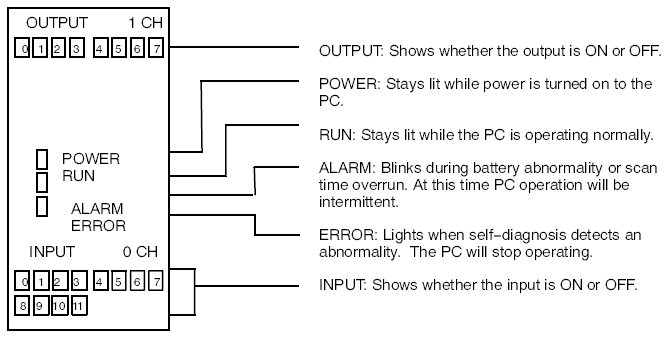
DIP switches will control items such as language and program transfer from EPROM to RAM. Check your EPROM sockets to see if a chip has been placed in the unit. If so then your program is still intact.

Errors on the CPU – Omron Troubleshooting
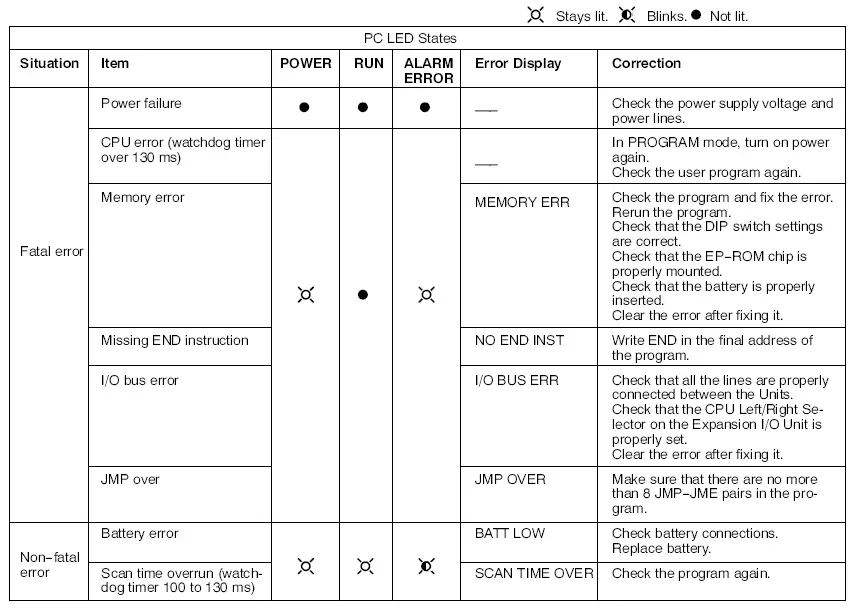
There are two possible error types in the PLC. Fatal and Non-Fatal.
Fatal errors will happen when the program or parts of the program have been lost. They can also happen if there is a power failure. (Fuses) The program will not run during a fatal error.
The non-Fatal error will still run your program. There will be a blinking error light to indicate the error. Typically this error is due to a battery error. (Battery needs to be replaced.)
To access the components in the main unit of the PLC, remove the 4 screws on each corner of the PLC.
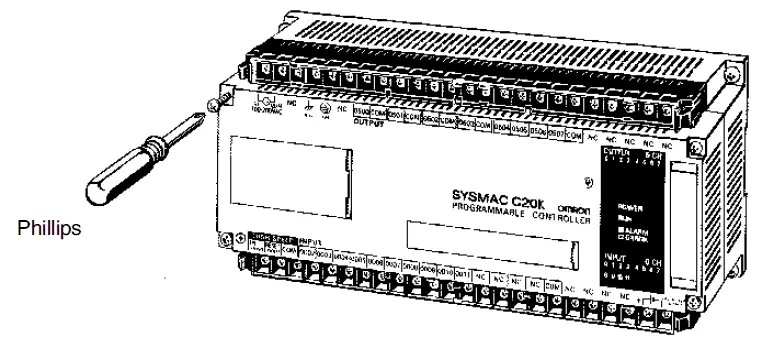
Note: When removing the screws and working in the unit, the capacitor that keeps the ram memory stored is good for 5 minutes. You should always start by having the power onto the unit to charge the unit. While charging unscrew the 4 corner screws. Turn the power off, and remove the top unit.
Fuse Change – Omron Troubleshooting
There are two fuses in the PLC. One for the incoming supply and one for the 24VDC power supply. They are fuse holders and designed to be replaced when needed.
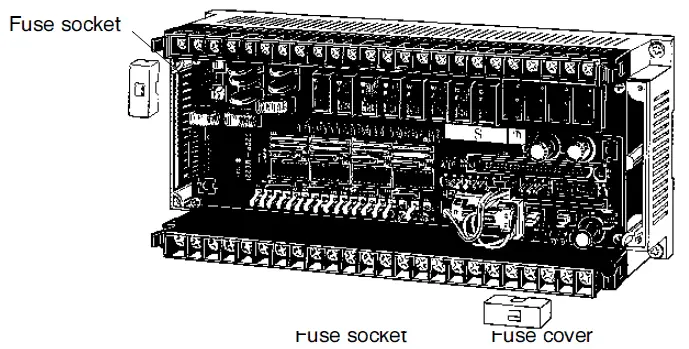
Battery Change – Omron Troubleshooting
The battery is in a holder and has a connector that will plug in. You will have only 5 minutes to change this battery before you will lose the memory in the unit.
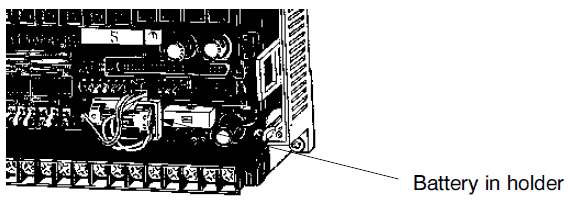
Relay Change – Omron Troubleshooting
Relay outputs on these controllers used sockets. This way the individual relays could be changed without replacing the entire unit.
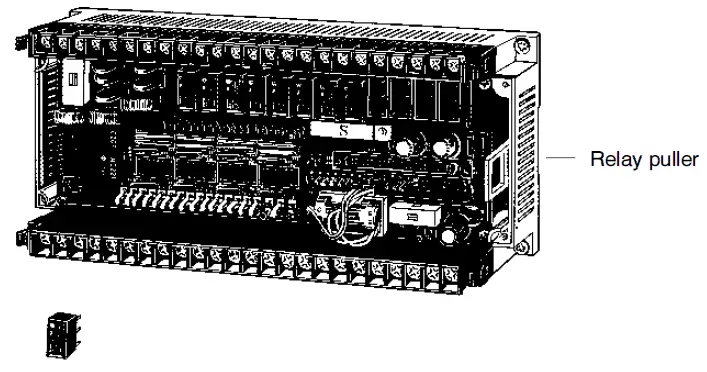
Note: A relay puller was also included inside the unit to the right hand side. This allows you to change the relay without bending the pins.
Addressing – Omron Troubleshooting
The K series PLCs used a fixed address system. A maximum of 10 16-bit registers could be used for each CPU unit for the expansion I/O units added.
Example:
C28K-CDR-A (CPU 16 DC inputs / 12 relay outputs) + C20P-EDR-A (Expansion 12 DC inputs / 8 relay outputs)
Channel 0 – Address 000.00 to 000.15 – 16 DC inputs CPU
Channel 1 – Address 001.00 to 001.11 – 12 Relay outputs CPU
Channel 2 – Address 002.00 to 002.11 – 12 DC inputs Expansion
Channel 3 – Address 003.00 to 003.07 – 8 Relay outputs Expansion
Handheld Unit – Omron Troubleshooting
3G2C7-PRO15-E was the handheld unit that attaches to the peripheral connector on the CPU unit. This was one of the most popular methods to program the controller. A selector switch on the unit allowed you to select between Run, Monitor, and Program. To view any alarms on the controller, plug the handheld unit into the CPU. Ensure that the switch is in either Run or Monitor mode. (This will ensure that the CPU continues running if we have a non-fatal error.) Press CLR, MON, CLR. Your unit will display the error in the CPU.
You can see the entire operation of the handheld in the operation manual listed above. I also demonstrate the use of this handheld in the video below.
You can still get these units off of ebay or other locations:
http://www.ebay.com/bhp/omron-pro15
Software
Using a 3G2C7-LK201-EV1 (Host Link) unit which plugs into the peripheral connector you can communicate to a computer. The software that originally came out to communicate this way was LSS. (Ladder Support Software) This was DOS based and programs saved with this software used the extension .DAT. When windows came out you could use the Omron programming package called Syswin. Currently both of these packages are obsolete. The latest package is called CX-Programmer which is part of the CX-One software package. CX-Programmer will not program the K series or C20 PLCs. It does however include a CX-Programmer File Converter. This converter will convert your old programs done in LSS or Syswin to a newer format. You can then change your addressing to suit this new controller.
Future – Omron Troubleshooting
Your Omron K series or C20 CPU will fail. To ensure that you do not lose your logic for a machine, I would verify that you have a copy of the program. This copy can be the list of mnemonic codes, written down from the handheld unit or a program in LSS that has been converted to CX-programmer. Ensure you take steps so the program will not be lost on a fatal error.
Find parts for your Omron K series PLC.
Watch on YouTube: Omron C20K, C28K, C40K, C60K Troubleshooting
If you have any questions or need further information please contact me.
Thank you,
Garry
If you’re like most of my readers, you’re committed to learning about technology. Numbering systems used in PLC’s are not difficult to learn and understand. We will walk through the numbering systems used in PLCs. This includes Bits, Decimal, Hexadecimal, ASCII and Floating Point.
To get this free article, subscribe to my free email newsletter.
Use the information to inform other people how numbering systems work. Sign up now.
The ‘Robust Data Logging for Free’ eBook is also available as a free download. The link is included when you subscribe to ACC Automation.

